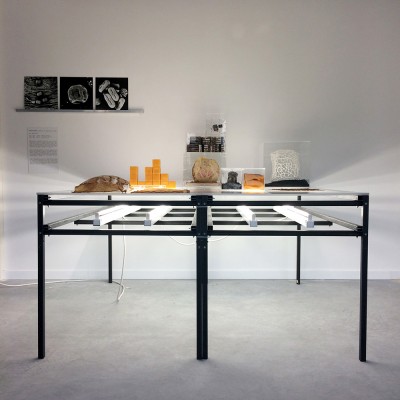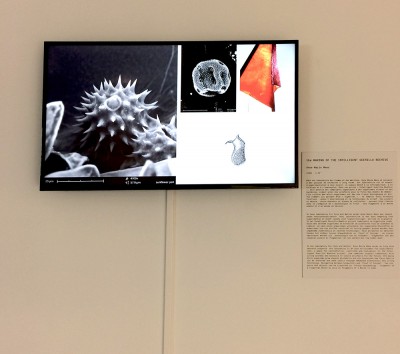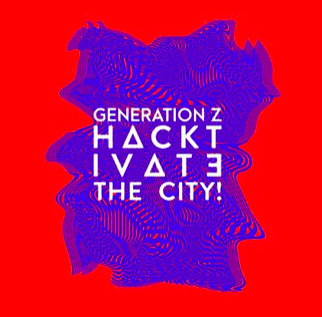Generation Z, Hacktivate the City – is an introduction to the Bio STARTS Lab (Science, Technology & the Arts) organised by Gluon. The Lab, led by Artist AnneMarie Maes and Biologist Tom Peeters will teach young peoplehow to set off on an interdisciplinary quest for solutions to big city challenges. The young ‘urban activists’ draw their inspiration from the nature in the city and use new digital technologies to come up with ideas, tools and prototypes for a more sustainable Brussels.
Vandaag leeft een groot deel van de bevolking in grote steden, dikwijls vervreemd van de natuur. Tegelijk nopen mondiale problemen zoals klimaatopwarming en vervuiling tot een duurzame balans tussen menselijke en natuurlijke systemen. In samenwerking met biologen, ICT experts en kunstenaars realiseren jongeren in het BIO STARTS (science, technology & the arts) LAB ideeën en prototypes die de relatie tussen mens, natuur en stad verbeteren.
Dit lab wordt begeleid door de Brusselse kunstenares AnneMarie Maes en de bioloog Tom Peeters. AnneMarie Maes combineert kunst en wetenschap met een sterke interesse voor natuur en DIY-technologieën. Ze werkt met een scala aan biologische, digitale en traditionele media, waaronder levende organismen. Tom Peeters is een bioloog en doctor in de microbiologie. Het Lab gaat door in het Biolab van de Erasmus Hogeschool, april 2018.
the INTELLIGENT GUERILLA BEEHIVE (double take)
150 x 38 x 38 / sculpture with microbial skin and electronics in plexiglass box on metal pedestal

The Intelligent Guerilla Beehive is a bio-art project on the edge of art and science. It combines in a radical way smart materials, biomimetic forms and biotechnology, and it evokes issues of sustainability and biodiversity. This radically new device is inspired by the intelligence, complexity and self-organisation of bee colonies, and it tackles a domain where human and non-human actors collaborate to maintain the resilience of an ecosystem in decline.
The Intelligent Guerilla Beehive is a shelter for swarming bee colonies, prototyped out of organic materials and powered by green energy. It is a bio-technological sensing device that measures the health of the environment, and as well it monitors the wellbeing of bee colony living inside. Bacteria -living in a biofilm on the outer skin of the beehive- send out warnings by adapting their colour to different degrees of environmental contamination. Bacteria living on the inner side of the beehive’s skin support the bees in their struggle against the Varroa mite.
WUNDERKAMMER (objects on laboratory table)
150cm x 150cm – x-objects – dimensions variable

The wunderkammer is composed of a series of strange objects. They are presented on a large laboratory table. Their forms are inspired by nature, and the organic materials they are made of are grown by bacteria or made out of vegetal matter. Every artifact is the outcome of a particular experiment. Most of the items are studies for different parts of the Intelligent Beehive project: the development of a mobile shelter for homeless honeybees.
the MAKING OF THE INTELLIGENT GUERILLA BEEHIVE
video – 6’14”

In her Laboratory for Form and Matter, AnneMarie Maes works on long term research projects. Her laboratory is an open environment for experimentation, a space for contradiction, criticism and evaluation. In the Intelligent Guerilla Beehive project, she combines organic components with living systems and bacteria to create artifacts for the future. She makes micro-organisms grow organic biofabrics and she researches how these fabrics can be enhanced and made useful through embedded electronics and living technology. Navigating between blueprints and ‘Proof of Concept’, her projects and objects can be classified as ‘Future Archaeology’: fragments of a Forgotten World as well as fragments of a World To Come.
MICROBIAL SKINS with VEGETAL DYES
membranes grown by bacteria, vegetal dyes – 200cm x 50cm

Series of microbial skins, grown in a symbiotic action by Acetobacter xylinum bacteria and yeast cells. These skins are coloured with vegetal dyes: Indigo Blue, Black Oak Gall, Campèche, Hibiscus, Stinging Nettles, Cochineal. All vegetal dye matter was grown in de rooftop laboratory, some of the dyes are processed from organic matter collected during travels (Black Oak Gall, California – Cochineal, La Gomera)
